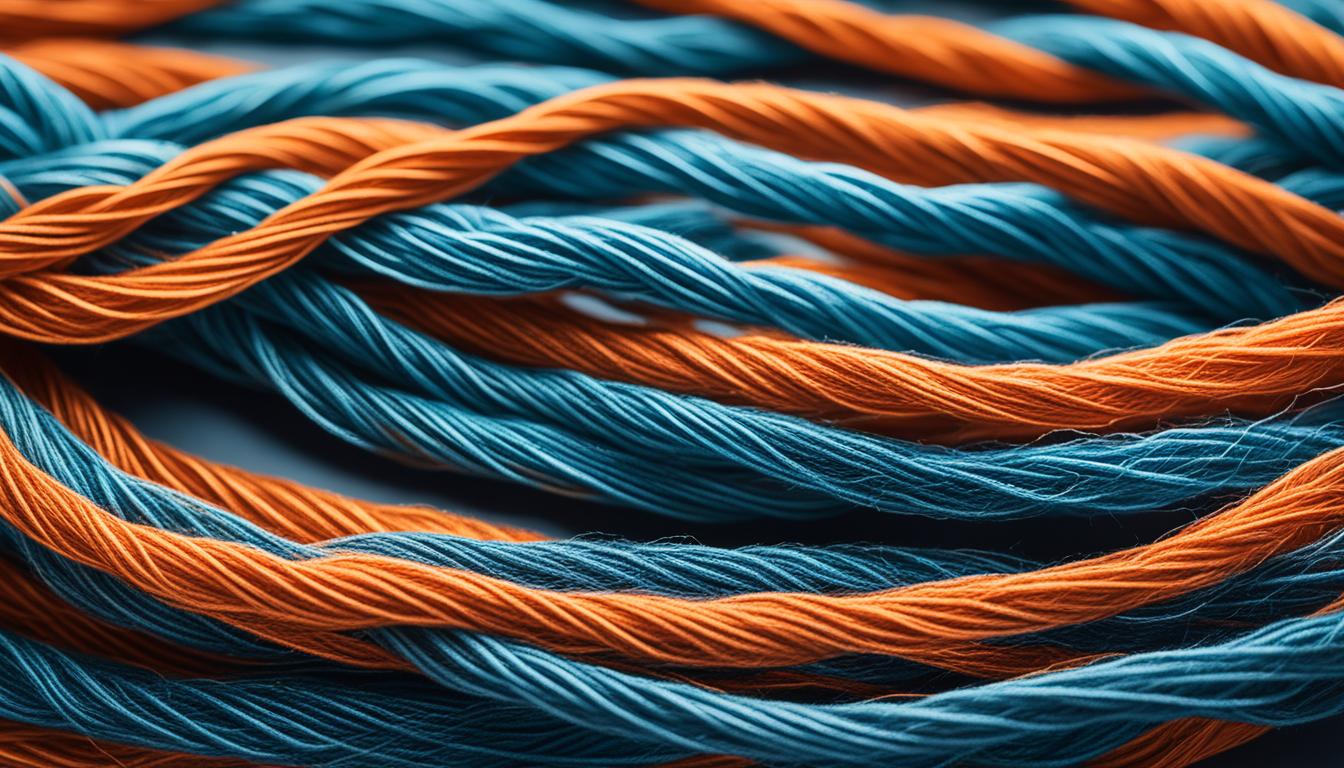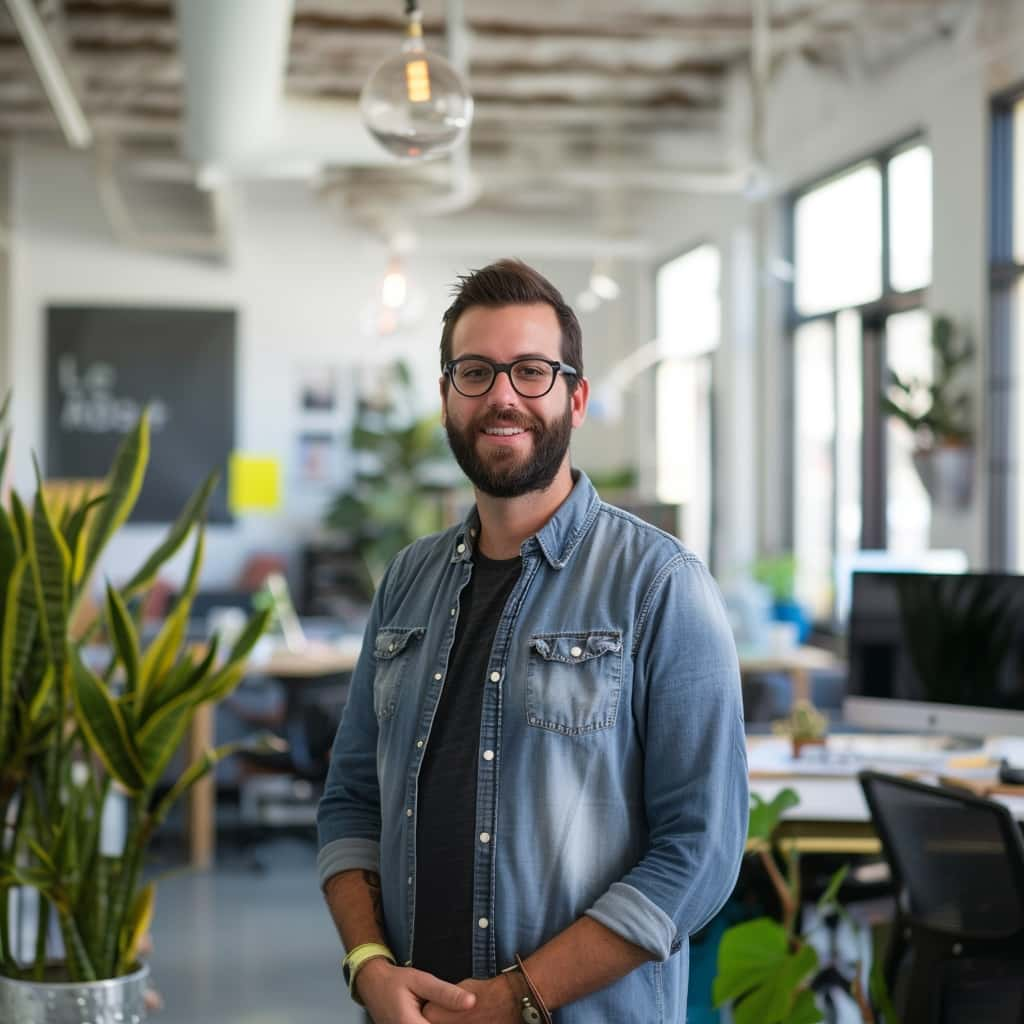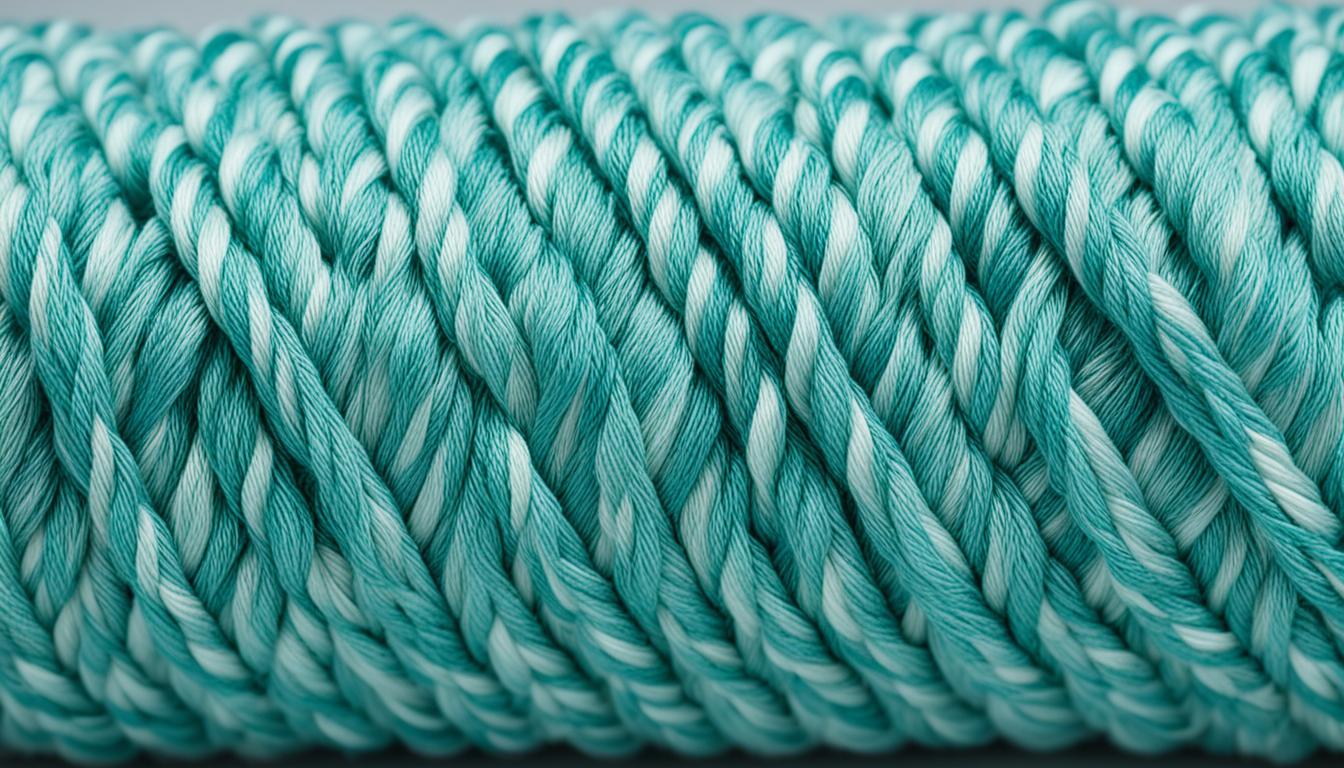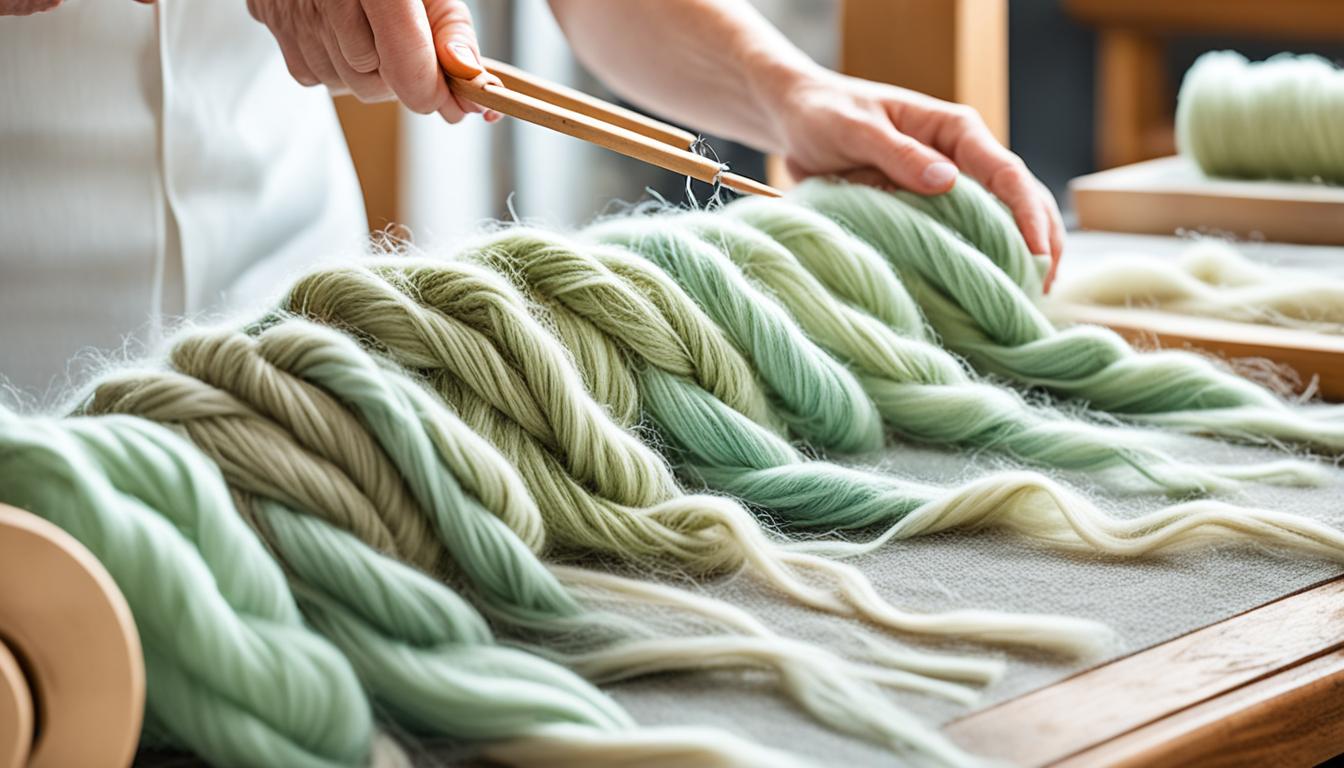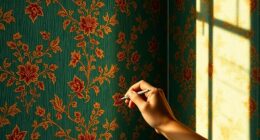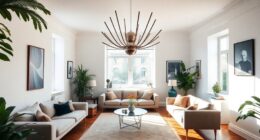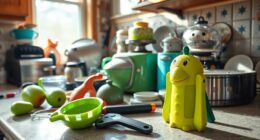Welcome to our detailed look into cationic yarn. Have you ever been curious about what cationic yarn is and how it sets itself apart from regular polyester yarn? Come with us as we delve into the realm of cationic yarn and discover its special characteristics, advantages, and wide range of uses in the textile sector. By the conclusion of this article, you will grasp why cationic yarn is becoming increasingly popular and changing the landscape of textiles.
But first, let’s start with the basics. What exactly is cationic yarn?
Key Takeaways:
- Cationic yarn is a modified polyester yarn that offers numerous benefits and improved performance compared to regular polyester yarn.
- It can be dyed with cationic dyes, resulting in vibrant colors and excellent color fastness.
- Cationic yarn has enhanced hygroscopicity, making it softer and more comfortable against the skin.
- It has excellent antistatic properties, making it resistant to static electricity accumulation.
- Cationic yarn finds wide application in clothing, bedding, and various textile products.
Dyeing Performance of Cationic Yarn
Cationic yarn boasts exceptional dyeing performance, making it a favored choice in the textile industry. Its ability to be dyed with cationic dyes results in vibrant and long-lasting colors that retain their brilliance even after multiple washes. The dye molecules in cationic dyes carry a positive charge, allowing them to effectively bond with the positively charged cationic yarn. This bond enhances color fastness, preventing the dye from fading or washing out easily. Regular polyester yarn, on the other hand, is typically dyed with disperse or acid dyes, which offer lower color fastness compared to cationic dyes.
The use of cationic dyes and the resulting properties of cationic yarn contribute to its popularity in various textile applications. The vibrant and durable colors achieved through cationic dyeing make cationic yarn an excellent choice for apparel, home textiles, and other fabric-based products. Whether it’s a vibrant dress or a cozy blanket, cationic yarn ensures that the colors remain vibrant and lively for a long time.
The Benefits of Cationic Yarn Dyeing
Enhanced Color Fastness: Cationic yarn’s compatibility with cationic dyes results in superior color fastness. This ensures that the colors stay vivid and vibrant, even after repeated washings.
Long-Lasting Colors: Cationic yarn’s ability to retain the dye molecules strengthens the longevity of colors. This means that fabrics dyed with cationic yarn remain visually striking and full of life.
Wide Range of Color Options: Cationic dyes offer an extensive palette of colors, enabling designers and manufacturers to create diverse and eye-catching textile products. From soft pastels to bold and bright hues, cationic yarn delivers exceptional color choices.
High Color Consistency: Cationic yarn dyeing ensures consistent color quality, eliminating variations in shade or intensity that can occur with other dyeing methods. This consistency allows for precise color matching and enhances the overall aesthetic appeal of textile products.
Comparison of Cationic Yarn and Regular Polyester Yarn Dyeing
| Cationic Yarn | Regular Polyester Yarn | |
|---|---|---|
| Color Fastness | High | Lower compared to cationic yarn |
| Color Options | Wide range | Restricted |
| Longevity of Colors | Excellent | Not as durable as cationic yarn |
| Color Consistency | Highly consistent | May have shade or intensity variations |
Hygroscopicity and Softness of Cationic Yarn
Cationic yarn possesses unique properties that set it apart from regular polyester yarn. One of its notable features is enhanced hygroscopicity, which refers to its ability to absorb moisture. This property gives cationic yarn an edge, as it can absorb moisture more effectively than regular polyester yarn. As a result, textiles made from cationic yarn offer a softer and more comfortable feel when in contact with the skin.
The improved hygroscopicity of cationic yarn contributes to its overall softness, making it a favored choice for clothing and bedding materials. The moisture-absorbing capability of cationic yarn ensures that it remains gentle and cozy against the skin, enhancing the wearer’s comfort throughout the day or night.
In contrast, regular polyester yarn has lower hygroscopicity, which can result in a harder and less comfortable feel. The decreased ability to absorb moisture makes regular polyester yarn less suitable for products that require a soft and luxurious texture.
By selecting cationic yarn for your textile products, you can enjoy the benefits of its enhanced hygroscopicity, resulting in softer and more comfortable fabrics.
Benefits of Cationic Yarn
Cationic yarn offers several benefits that make it a popular choice in the textile industry:
- Enhanced Hygroscopicity: Cationic yarn’s superior moisture absorption capabilities provide a softer and more comfortable feel against the skin.
- Improved Softness: The hygroscopic properties of cationic yarn contribute to its overall softness, optimizing comfort in clothing and bedding materials.
- Enhanced Comfort: Fabrics made from cationic yarn offer a pleasant and cozy experience due to their hygroscopic and soft characteristics.
The combination of enhanced hygroscopicity and softness makes cationic yarn an ideal choice for manufacturers looking to create high-quality and comfortable textile products.
Now, let’s explore the antistatic properties of cationic yarn.

Antistatic Properties of Cationic Yarn
Cationic yarn offers remarkable antistatic properties, making it highly resistant to the accumulation of static electricity. Unlike regular polyester yarn, which tends to build up static electricity, cationic yarn goes through a production process that involves adding cationic activators. These activators effectively prevent the adverse effects caused by static electricity buildup.
Due to its antistatic properties, cationic yarn is particularly beneficial for products that require static control, such as clothing and textiles used in electronic environments. These specially-treated yarns help minimize the risk of static discharges and electrostatic shocks, making them an excellent choice for industries that demand anti-static solutions.
Preventing Electrostatic Discharges
One of the key advantages of cationic yarn is its ability to prevent electrostatic discharges (ESD). Electrostatic discharges can be extremely damaging, especially in electronic and industrial settings where sensitive equipment is involved. By utilizing cationic yarn, manufacturers can reduce the risk of ESD-related damages, ensuring the smooth operation of their equipment and systems.
Enhancing Worker Safety
Another notable benefit of cationic yarn’s antistatic properties is its contribution to worker safety. In industries where electrostatic discharge can be hazardous, such as chemical processing or manufacturing facilities, garments made with cationic yarn can help protect workers from potential accidents caused by static electricity.
“Cationic yarn’s antistatic properties make it an ideal choice for garments used in environments that require static control. It provides excellent protection against electrostatic discharges, ensuring both worker safety and equipment integrity.” – Jane Thompson, Textile Safety Specialist
Prolonging Product Lifespan
Products made with cationic yarn’s antistatic properties also tend to have an extended lifespan. Static electricity can attract dust, dirt, and other particles, which can lead to product degradation or malfunction in certain industries. By reducing static buildup, cationic yarn helps keep products clean, minimizing the need for frequent cleaning or maintenance and prolonging their overall lifespan.
FAQs
- Q: Can cationic yarn eliminate all static electricity?
A: While cationic yarn significantly reduces static electricity, it doesn’t eliminate it entirely. It is crucial to properly ground garments and follow proper static control protocols in specific environments. - Q: Are cationic yarn products more expensive than regular polyester yarn products?
A: The cost of cationic yarn products can vary depending on factors such as manufacturing processes and material specifications. However, the benefits and added value of cationic yarn often outweigh any marginal price differences.
Antistatic Properties of Cationic Yarn vs. Regular Polyester Yarn
| Properties | Cationic Yarn | Regular Polyester Yarn |
|---|---|---|
| Static Electricity Accumulation | Resistant to static buildup | Prone to static electricity accumulation |
| Electrostatic Discharge Protection | Offers effective protection against electrostatic discharges | May contribute to electrostatic discharges |
| Worker Safety | Enhances worker safety in environments where static control is crucial | May pose safety risks in static-sensitive environments |
| Product Lifespan | Prolongs the lifespan of products by reducing product degradation caused by static buildup | May require frequent cleaning or maintenance due to static-related issues |
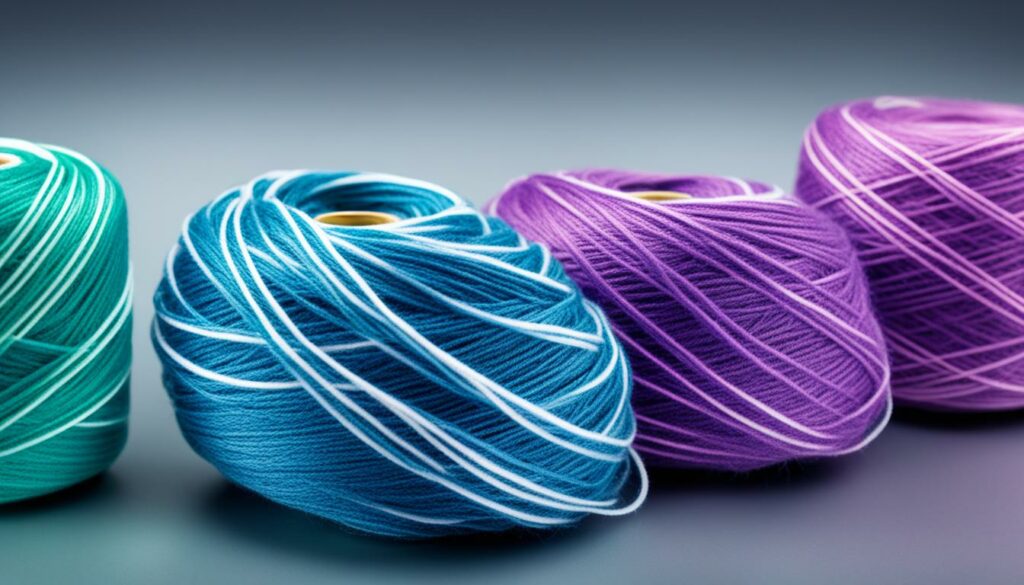
In Summary
Cationic yarn’s impressive antistatic properties make it an invaluable choice for a wide range of applications. Whether in garments intended for electronic environments or products that require static control, cationic yarn helps prevent static electricity accumulation, safeguard workers, and extend the lifespan of various textile products. By incorporating cationic yarn into their designs, manufacturers can create high-performance, long-lasting products that meet the demands of modern industries.
Feel and Softness of Cationic Yarn
Cationic yarn is renowned for its remarkable softness and smooth feel, making it a highly desirable choice for various textile applications. When it comes to clothing and bedding items made from cationic yarn, the softness of the fabric enhances overall comfort, providing a luxurious experience for the wearer.
Unlike regular polyester yarn, which may feel harder and lack the same level of softness, cationic yarn delivers a gentle touch against the skin, ensuring maximum coziness. Whether it’s a soft and breathable t-shirt or a plush and velvety blanket, cationic yarn elevates the tactile experience, enveloping you in a world of comfort.
Furthermore, cationic yarn’s softness is accompanied by exceptional wrinkle resistance and durability. This means that clothing and textiles made from cationic yarn maintain their smoothness and shape for longer periods, reducing the need for excessive ironing or frequent replacement. It’s a convenient and low-maintenance choice for those seeking quality, long-lasting textile products.
Unlocking Unparalleled Comfort
With cationic yarn, comfort is key. Its supremely soft texture transforms everyday textiles into luxurious pieces that offer unrivaled sensations of relaxation. The notable softness of cationic yarn makes it ideal for clothing items that are worn close to the skin, such as loungewear, underwear, and sleepwear, ensuring a consistently comfortable experience throughout the day or night.
Clothing and bedding made from cationic yarn provide the perfect balance of softness and breathability, allowing your skin to breathe without compromising coziness. The result is a fabric that feels like a gentle embrace, enveloping you in pure comfort.
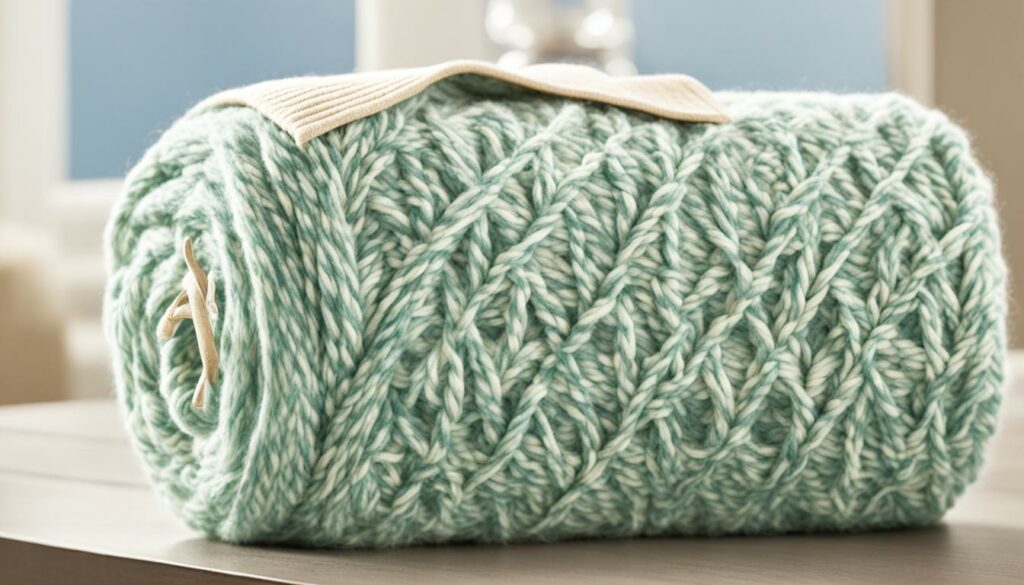
Unleashing Comfortable Style
Cationic yarn not only offers unparalleled comfort but also the opportunity to express personal style. Its soft and smooth feel effortlessly enhances the aesthetic appeal of any textile product, giving it a high-end and sophisticated look.
Whether it’s a classic dress, a cozy sweater, or luxurious bedding, the softness of cationic yarn adds an element of elegance, making every fabric piece visually appealing and inviting. Its versatility allows designers and manufacturers to create a diverse range of styles and fashion-forward designs, without compromising on the comfort that cationic yarn brings.
When it comes to textiles, the softness and feel of the fabric can make all the difference. Cationic yarn ensures a delightful tactile experience, offering the perfect balance between comfort and style. From clothing to bedding, cationic yarn provides a luxurious touch that elevates any textile product to new heights of satisfaction.
| Cationic Yarn | Regular Polyester Yarn |
|---|---|
| Exceptionally soft and smooth | May feel harder and lack softness |
| Wrinkle-resistant and durable | More prone to wrinkles and less durable |
| Provides a gentle touch against the skin | Less gentle on the skin |
| Offers a luxurious and comfortable experience | May have a less comfortable feel |
Application Fields of Cationic Yarn
Cationic yarn is incredibly versatile and finds wide application in products that require materials in contact with the skin. This unique polyester yarn offers exceptional softness, comfort, and hygroscopic properties, making it a popular choice for various textile applications. Some of the primary application fields for cationic yarn include:
Clothing
Cationic yarn is extensively used in the manufacturing of clothing items such as shirts, dresses, underwear, and activewear. The soft and smooth feel of cationic yarn adds a luxurious touch to garments, enhancing the overall comfort and wearability. Whether it’s a casual t-shirt or a high-performance athletic outfit, cationic yarn ensures that the fabric feels gentle against the skin.
Bedding
When it comes to creating cozy and comfortable bedding products, cationic yarn is an excellent choice. Sheets, pillowcases, and blankets made from cationic yarn have superior softness, making them perfect for a restful night’s sleep. The hygroscopic properties of cationic yarn also contribute to better moisture absorption, helping to regulate body temperature during sleep.
“Cationic yarn brings exceptional softness and comfort to clothing and bedding products, making them a delight to wear and use.”
Due to its unique properties, cationic yarn is often favored over regular polyester yarn in these specific application fields. Regular polyester yarn, on the other hand, is used across a wide range of textile applications, including apparel, home textiles, and other fabric-based products.
Overall, cationic yarn’s applications extend not only to clothing and bedding but can also be found in a variety of other fabric-based products that require a soft, comfortable touch.
| Application Fields | Cationic Yarn | Regular Polyester Yarn |
|---|---|---|
| Clothing | Shirts, dresses, underwear, activewear | Apparel, textiles, fabric-based products |
| Bedding | Sheets, pillowcases, blankets | Home textiles, fabric-based products |

Combustion Characteristics of Cationic Yarn
When it comes to the combustion characteristics of cationic yarn, there are distinct differences that set it apart from regular polyester yarn. When both types of yarn are burned, they both produce yellow flames. However, there is a notable difference in the smell produced during combustion.
Cationic yarn has a slightly pungent smell when burned, while regular polyester yarn emits a stronger odor. This difference in odor can be a helpful indicator to differentiate between cationic yarn and regular polyester yarn.
The combustion characteristics of cationic yarn provide valuable insights for textile manufacturers and consumers. By understanding these properties, one can ensure the appropriate identification and application of cationic yarn in various textile products.
Now let’s take a closer look at these combustion characteristics.
Aroma Comparison
When cationic yarn is burned, it exudes a distinctive slightly pungent smell. This aroma can be attributed to the unique chemical structure of the cationic dyes used in the dyeing process of cationic yarn.
In contrast, regular polyester yarn, when burned, releases a stronger and potentially more unpleasant smell. This odor is a result of the different chemicals and additives present in regular polyester yarn.
“The combustion characteristics of cationic yarn provide valuable insights for textile manufacturers and consumers.”
These differences in smell can be helpful in identifying the type of yarn used in a textile product. By recognizing these odor distinctions, manufacturers and consumers can make informed decisions, ensuring the use of the desired yarn type in their products.
Visual Comparison
While the smell of burning yarn can be a distinguishing factor, it is important to consider other visual cues as well. When both cationic yarn and regular polyester yarn are burned, they produce similar yellow flames.
However, it is worth noting that the appearance of the ash and residue can offer additional insights. The ash and residue left behind after burning cationic yarn may have a slightly different texture or color compared to regular polyester yarn.
This visual comparison, combined with the aroma distinctions, can help ensure the accurate identification of cationic yarn in textile products.
Summary
The combustion characteristics of cationic yarn, including its distinct smell and visual cues, enable manufacturers and consumers to differentiate between cationic yarn and regular polyester yarn. This understanding is crucial for using cationic yarn in the appropriate applications and ensuring the desired properties and performance of textile products.
| Cationic Yarn | Regular Polyester Yarn |
|---|---|
| Produces a slightly pungent smell when burned | Emits a stronger odor when burned |
| Leaves behind ash and residue with potentially different texture or color | May have ash and residue with different characteristics |
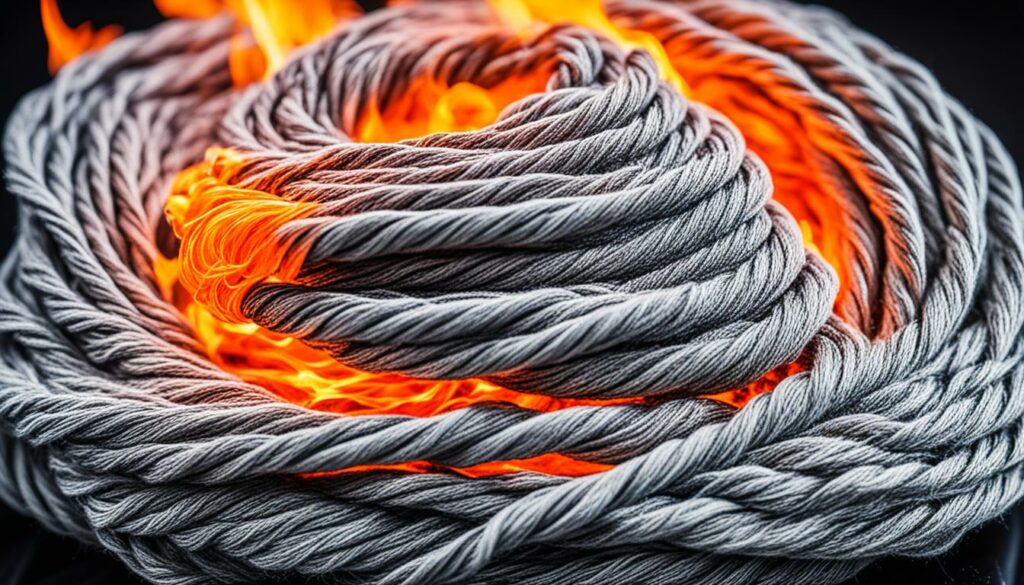
How Cationic Fabrics Are Used
Cationic fabrics, made with cationic yarn in the warp direction and regular polyester yarn in the weft direction, have a wide range of applications in the textile industry.
These fabrics offer a unique two-color effect, making them ideal for creating visually appealing textiles. The integration of cationic yarn results in fabrics with distinctive color combinations that stand out from traditional single-color fabrics.
One of the primary applications of cationic fabrics is in the production of sportswear. Items such as sweatshirts, sweatpants, and yoga clothes, which require both functionality and a stylish appearance, can benefit from the vibrant and eye-catching colors achieved with cationic fabrics.
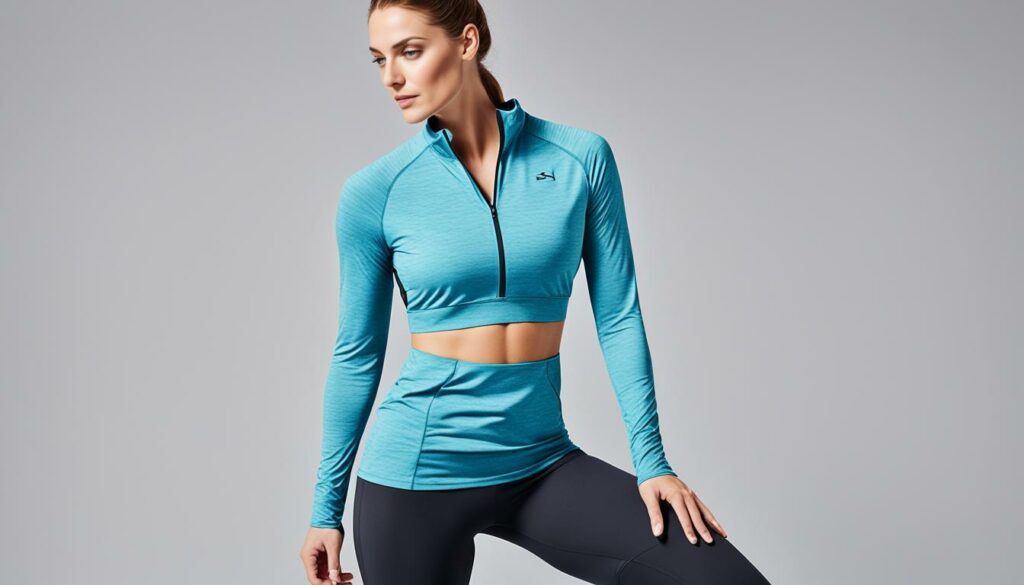
Cationic fabrics are also widely used in the manufacturing of environmentally friendly polyester-spandex jerseys. These fabrics provide excellent moisture-wicking properties, making them suitable for athletic apparel that requires effective sweat management. The combination of cationic yarn and spandex in these jerseys ensures comfort, stretchability, and durability.
Additionally, cationic fabrics find application in high-end underwear, swimwear, and sportswear fabrics. The unique color effects achieved with cationic yarn enhance the aesthetics of these products, creating sophisticated and visually appealing designs.
To summarize, cationic fabrics, made with cationic yarn, are versatile and widely used in the textile industry. Their distinctive two-color effect, excellent moisture-wicking properties, and durability make them a popular choice for sportswear, environmentally friendly jerseys, and high-end apparel.
Environmental Benefits of Cationic Cotton
Cationic cotton technology offers numerous environmental benefits in the textile dyeing process, making it a sustainable choice for fashion brands and consumers alike. By incorporating cationic chemistry into the dyeing process, we can significantly reduce water, energy, and chemical consumption, resulting in a more eco-friendly approach to textile production.
One of the significant advantages of cationic cotton is its ability to achieve greater dye utilization. Unlike traditional dyeing methods, cationic cotton allows for more efficient color absorption, reducing the amount of dye required to achieve vibrant hues. This increased dye utilization not only saves resources but also minimizes wastewater production, as there is less unfixed dye to rinse out of the fabric.
Furthermore, cationic cotton eliminates the need for salt and alkali, commonly used in conventional dyeing processes. These chemicals not only pose environmental risks but also require additional energy and resources for their production and disposal. By removing salt and alkali from the equation, cationic cotton reduces chemical input and decreases the overall environmental impact of the dyeing process.
Overall, the adoption of cationic cotton in the fashion industry promotes sustainable fashion practices by conserving resources, reducing chemical usage, and minimizing environmental pollution. By choosing cationic cotton, we can contribute to a more responsible and efficient textile industry that aligns with our commitment to sustainability.
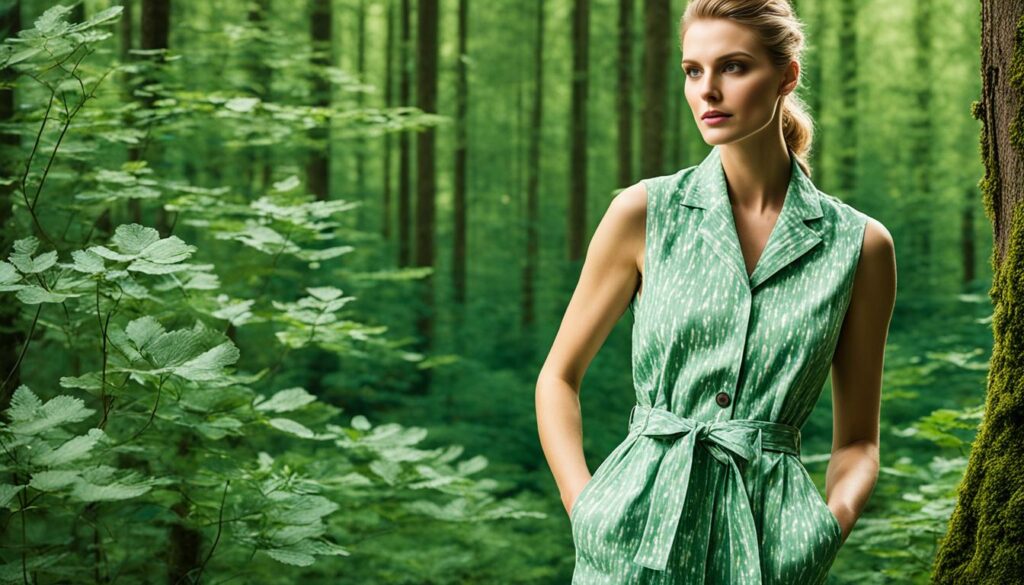
Advances in Cationic Cotton Technologies
Recent advancements have propelled cationic cotton technologies forward, paving the way for a promising future in sustainable textile production. These innovations have been focused on addressing traditional challenges, aiming to enhance efficiency, reduce water usage, cut costs, and minimize the environmental impact. One notable development is the introduction of cationic cotton pretreatment, such as the groundbreaking ECOFAST™ Pure Textile Treatment by Dow. This pretreatment offers significant commercial improvements for cationic cotton technology, making it more efficient and environmentally friendly.
Ongoing research and development efforts continue to push the boundaries of cationic cotton. Scientists and textile experts are working to achieve deeper black shades, improve dyeing processes, and explore new cationic chemistries that can introduce exciting new functionalities to cotton fabrics. The future of cationic cotton holds immense potential for creating fabrics with enhanced performance, aesthetics, and sustainability.
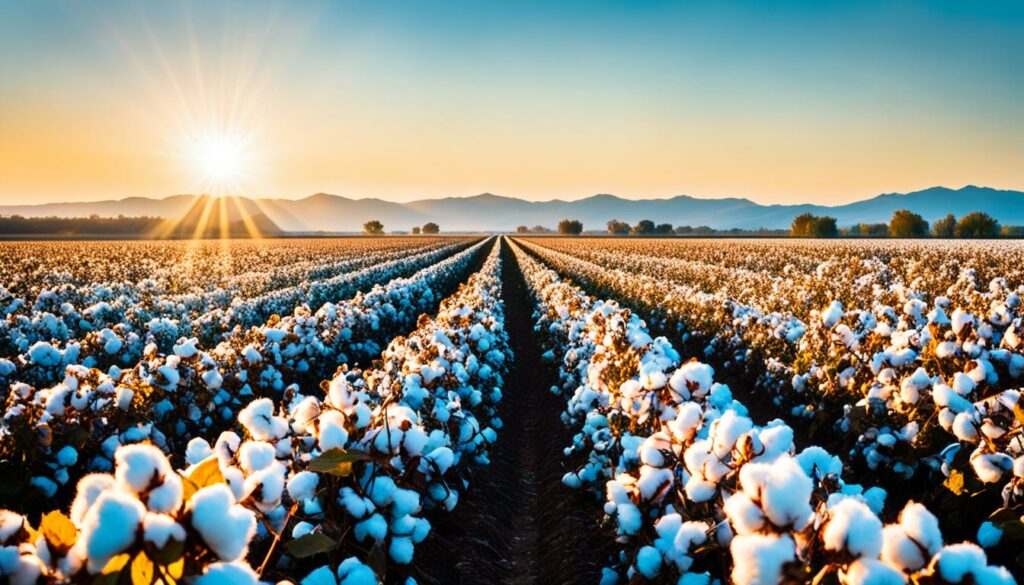
Innovating for Performance and Sustainability
We are constantly pushing the boundaries of cationic cotton technologies to unlock its full potential. Our aim is to develop fabrics that not only offer exceptional performance but also meet the highest standards of sustainability. By exploring new dyeing processes, chemistry advancements, and technological solutions, we can create a brighter and more sustainable future for the textile industry.
Enhanced Efficiency and Reduced Environmental Impact
Advancements in cationic cotton technologies have resulted in improved efficiency throughout the production process. By streamlining dyeing processes and optimizing chemical usage, manufacturers can reduce waste, limit water consumption, and minimize energy requirements. This not only benefits the bottom line but also contributes to reducing the ecological footprint associated with textile production.
Expanding Design Possibilities
The continuous development of cationic cotton technologies opens up exciting possibilities for designers and brands. With a wider palette of colors and enhanced dyeing capabilities, cationic cotton fabrics offer increased design flexibility. From vibrant sportswear to elegant home textiles, these fabrics enable the creation of visually stunning and high-performance products.
Collaboration for a Sustainable Future
Our commitment to advancing cationic cotton technologies goes hand in hand with our dedication to sustainability. We believe that collaboration among industry stakeholders, from manufacturers to brands, can drive innovation and propel the textile industry towards a more sustainable future. By working together, we can harness the full potential of cationic cotton and create a positive impact on the environment and society as a whole.
Bottom Line Benefits of Cationic Cotton
Cationic cotton offers a multitude of benefits that can positively impact the bottom line for businesses in the textile industry. By incorporating cationic cotton into their production processes, companies can reap both cost and quality advantages.
Cost Benefits of Cationic Cotton
One of the significant cost benefits of using cationic cotton is the reduced dye consumption during the fabric dyeing process. Cationic cotton allows fabrics to achieve vibrant and long-lasting colors with less dye, resulting in cost savings. This reduction in dye usage not only lowers production expenses but also contributes to a decreased environmental footprint by minimizing the amount of dye and chemicals released into wastewater.
In addition to cost savings through decreased dye consumption, cationic cotton offers versatility in color production. With cationic cotton, fabrics can be dyed in a wide range of colors using a single base cloth. This eliminates the need for multiple product SKUs and finished inventory, streamlining operations and reducing costs associated with excess stock.
Quality Benefits of Cationic Cotton
Cationic treated cotton exhibits improved dye acceptance, resulting in cleaner and better-looking fabrics. The dye molecules adhere more efficiently to cationic cotton fibers, enhancing colorfastness and ensuring that the vibrant colors remain intact even after repeated washes. This quality benefit is particularly crucial for textiles used in apparel and home furnishings, where long-lasting colors are highly desirable.
Moreover, cationic cotton offers enhanced abrasion resistance, making fabrics more durable and long-lasting. This quality benefit allows businesses to produce high-quality textiles that withstand everyday wear and tear, reducing the need for frequent replacements and ultimately saving costs in the long run.
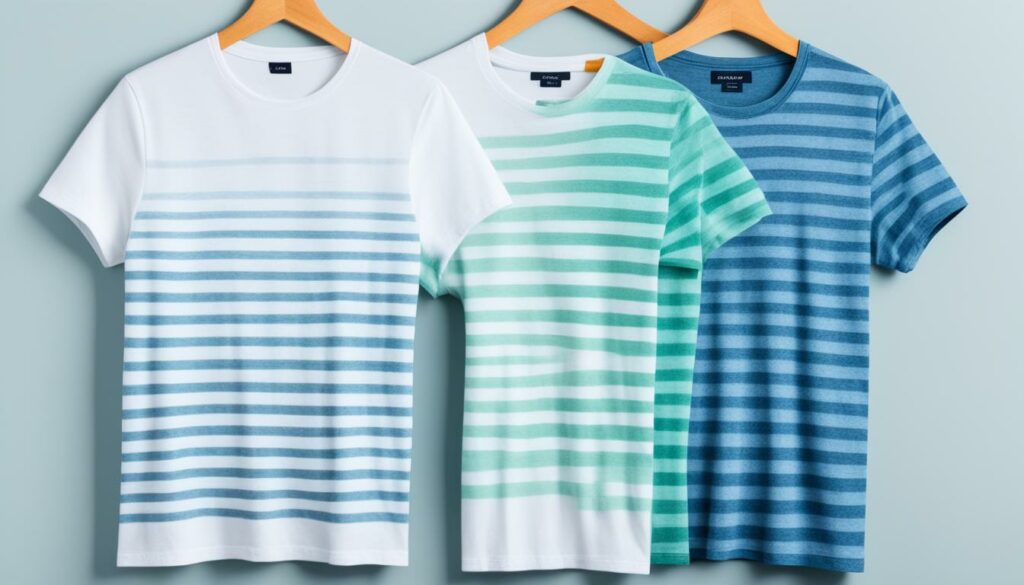
| Benefits | Cost Benefits | Quality Benefits |
|---|---|---|
| Dye Consumption | Reduced usage, cost savings | Improved colorfastness |
| Versatility | Single base cloth for various colors, lower inventory | Abrasion resistance, durability |
Overall, the cost and quality benefits of cationic cotton make it a valuable asset for businesses in the textile industry. By harnessing the reduced dye consumption and versatile color production capabilities of cationic cotton, companies can achieve significant cost savings and deliver high-quality fabrics that satisfy customer demands.
Conclusion
Cationic yarn, a specially modified polyester yarn, offers a plethora of benefits and applications in the textile industry. With its excellent dyeing performance and vibrant colors, cationic yarn adds a touch of vibrancy to clothing and bedding products. Its improved hygroscopicity, antistatic properties, and enhanced softness make it a preferred choice for items that come in contact with the skin.
From clothing to bedding, cationic yarn finds extensive use in various textile products. Its unique properties make it stand out, providing high-quality, comfortable, and durable fabrics. Moreover, the environmental benefits of cationic cotton technologies cannot be ignored. They reduce water, energy, and chemical consumption in the dyeing process, contributing to a more sustainable and efficient textile production.
Looking towards the future, continuous advancements in cationic cotton technologies promise even more exciting possibilities. From deeper shades to improved dyeing processes and newer functionalities, cationic yarn is poised to revolutionize the textile industry. By embracing cationic yarn, we can create a more sustainable and efficient future, where quality meets environmental responsibility.
